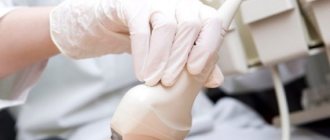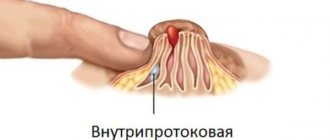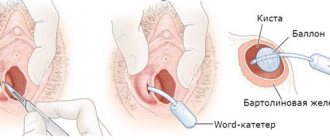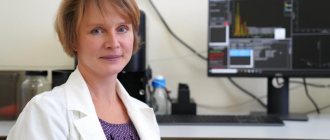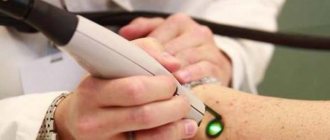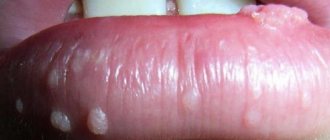Causes and risk factors
Every year in Russia alone, malignant tumors in this organ are detected in 50 thousand women. And worldwide this number exceeds a million. And the survival statistics are also disappointing so far. Almost half of the cases in women are fatal. Risk factors that can trigger tumor development include:
- hormonal imbalance;
- childlessness and having many children;
- very late first birth;
- frequent abortions;
- early onset and late cessation of menstruation;
- presence of mastopathy;
- age over 40 years;
- addiction to smoking and alcohol;
- obesity, as well as frequent stress;
- hypertonic disease;
- inflammation of the uterus and ovaries;
- atherosclerosis;
- hypothyroidism;
- liver diseases.
But it happens that cancer is discovered in patients who are not included in any of these risk groups.
Breast cancer code according to ICD 10
When diagnosing women diagnosed with breast cancer, the stage of the cancer and its location are reflected. Breast cancer according to the ICD has a general code of C50. Breast cancer is divided into subgroups that are assigned an additional degree:
- C50.0 – malignant tumor of the areola and nipple;
- C50.1 – damage to the central part
- C50.2 – cancer of the upper inner quadrate;
- C50.3 – malignant tumor of the inferior inner quadrate;
- C50.4 – lesion of the upper outer quadrant;
- C50.5 - tumor localized in the lower outer quadrant;
- C50.8 – involvement of a malignant tumor in several locations;
- C50.9 – part of the mammary gland affected by the tumor is not specified.
Many women turn to an oncologist with a question about what code the left breast cancer has in the ICD 10 system. For this type of malignant tumor, the general code C50 is presented, which is assigned an additional degree depending on its location.
Expert opinion
Author:
Alexey Andreevich Moiseev
Oncologist, chemotherapist, Candidate of Medical Sciences
Breast cancer has been the most common form of cancer for many years. Worldwide, there are more than 1.5 million women suffering from the pathology. Despite treatment, a third of cases are fatal. In Russia, the statistics are as follows: every 10 woman out of 1000 suffers from breast cancer. The occurrence of pathology in men cannot be ruled out. According to statistics, the ratio of men and women in the morbidity structure is 1:100.
The prevalence of pathology is influenced by internal and external factors. Therefore, it is important to carry out screening on time, especially for women with a family history. Doctors recommend self-examination and mammography once every 2 years. If pathological signs appear, you should immediately consult a doctor. The aggressive course of breast cancer is characterized by rapid progression. The prognosis for recovery is favorable if the diagnosis is made in the early stages.
Doctors at the Yusupov Hospital identify tumor foci at any stage of development. This allows for correct therapy and relief of the symptoms of the disease. For treatment, modern drugs are used, which are part of the latest world recommendations for the treatment of cancer.
Heredity factor as a sign of cancer
One of the mandatory actions in relation to a patient with breast cancer is to build his family tree and determine the need for genetic testing for the presence of BRCA genes . BRCA1 and BRCA2 are autosomal dominant genes that can be a sign of the development of breast cancer in up to 80% of relatives. There are several reasons to suspect the presence of these genes in the family:
- cases of cancer at a young age ;
- bilateral breast cancer , when after one breast is affected, the tumor forms in the second after some time;
- cases of breast cancer in men.
All of the above factors are a reason to conduct genetic testing to build a family tree for three generations and determine the mathematical probability of carrying the BRCA genes. Siblings and children of a carrier woman have a 50% chance of inheriting the gene . Thus, genetic testing is an effective method for preventing breast cancer.
Classification of tumors
In modern medicine, breast cancer is classified on various grounds. Thus, according to the degree of prevalence, three types are distinguished: primary tumor, cancer with damage to regional lymph nodes, and malignant tumor with distant metastases.
Experts have developed an extensive classification by stages, which is used when making a diagnosis all over the world. There are 4 stages of development of a malignant breast tumor, on which treatment tactics and prognosis depend.
The main indicators of the effectiveness of an oncologist are his experience and cooperation with the medical community. Modern oncologists not only classify breast cancer with ICD, but also develop treatment regimens taking into account concomitant diseases and the characteristics of the course of the disease.
How can I purchase Israeli-made medicines?
- After examination in Israel.
If you undergo diagnostics at the Ichilov Cancer Center, the doctor will prescribe medications for you, which you can purchase at an Israeli pharmacy. - In the country where the patient lives.
The telemedicine program developed at the Ichilov Cancer Center allows a patient from abroad to receive a video consultation with an Israeli doctor and a treatment protocol without leaving home. At the patient’s request, the oncology center will send him the prescribed medications (home delivery is possible).
Breast cancer: stages
The stage of breast cancer is determined based on the characteristics of the specific disease. Determining the stage helps determine the best treatment options.
Typically, the stage of breast cancer is designated by a number on a scale from 0 to IV, with stage 0 describing non-invasive cancer (carcinoma in situ) and stage IV describing invasive disease that has spread to other parts of the body. Breast cancer develops gradually. Doctors distinguish the following stages of breast cancer:
- Stage zero - non-invasive breast cancer. This means that there are no cancer cells outside the tumor;
- The first stage is invasive breast cancer, in which cancer cells appear in tissues adjacent to the tumor. At this stage, the tumor can reach two centimeters in diameter, but it is still difficult to detect by palpation;
- The second stage occurs when the tumor grows to five centimeters in diameter, and cancer cells have penetrated the lymph nodes surrounding the mammary gland;
- Stage three breast cancer is divided into two subcategories: IIIA and IIIB. IIIA is an invasive cancer with a tumor more than five centimeters in diameter and a significant number of abnormal cells in the lymph nodes. Stage IIIB is defined by a tumor in the breast of any size that has grown into the breast skin, internal lymph nodes, and chest wall;
- Stage four is a tumor that has grown beyond the breast, armpit, or lymph nodes located at the base of the neck, lungs, or liver.
Stages zero, first and second are considered early; at these stages the chances of successful treatment are quite high. If the cancer was detected at the third or fourth stage, the survival rate is much lower. In addition to the clinical four stages, there are four histological grades of breast cancer, depending on the malignancy:
- Gх – it is impossible to determine the degree of malignancy.
- G1 – low combined histological grade. The prognosis for life is favorable.
- G2 – average histological combination grade. The prognosis is moderately favorable.
- G3 is a high combined histological grade with a poor prognosis.
TNM stages
All over the world, the classification of breast cancer according to TNM is accepted, which includes the size of the tumor, the condition of the lymph nodes, and the presence or absence of metastases. The TNM staging system provides complete information about tumor development:
- the letter T – indicates the size of the malignant formation;
- the letter N is a description of the spread of cancer to the lymphatic system;
- the letter M is a description of the spread of the tumor to other tissues and organs.
Bibliography:
- Stenina M.B., Zhukova L.G., Koroleva I.A., et al./ Practical recommendations for drug treatment of invasive breast cancer // Zlokach. Tumors; 2016, no. 4; Special Issue 2.
- Glechner A., Wöckel A., Gartlehner G., et al./Sentinel lymph node dissection only versus complete axillary lymph node dissection in early invasive breast cancer: a systematic review and meta-analysis// Eur J Cancer; Mar 2013; 49(4).
- Hussain M., Cunnick GH/ Management of lobular carcinoma in-situ and atypical lobular hyperplasia of the breast—a review// Eur J Surg Oncol.; 2011 Apr; 37(4).
- Newman LA/ Management of patients with locally advanced breast cancer// Curr Oncol Rep.; 2004 Jan; 6(1).
- Virnig BA, Tuttle TM, Shamliyan T., Kane RL/ Ductal carcinoma in situ of the breast: a systematic review of incidence, treatment, and outcomes//J Natl Cancer Inst.; 2010 Feb 3; 102(3).
Metastases in breast cancer
Malignant cells can spread throughout the body. In breast cancer, they are able to “migrate” throughout the body in two main ways - through the bloodstream and through the lymphatic tract.
Metastases from breast cancer, spreading in the body through the lymphogenous route, are found in regional lymph nodes (parasternal, sub- and supraclavicular, axillary).
Treatment of metastatic breast cancer is carried out using the following methods:
- local therapy;
- systemic therapy;
- analgesic therapy.
Local therapy is aimed at destroying tumor cells and its metastases. For this purpose, radiation therapy, surgery, and a course of steroid medications are used.
Systemic therapy includes chemotherapy and hormonal therapy, as well as various additional innovative treatment methods. The effectiveness of such treatment does not appear immediately. When metastases affect the brain and spinal cord, liver, bones, radiation is used in combination with systemic therapy to stop the development of malignant cells.
Symptoms
Many breast cancers are discovered as masses by the patient or during routine physical examination or mammography. Less common symptoms include pain, swelling, or vague hardness in the mammary glands.
Symptoms of breast cancer:
- a lump in the breast that is different from the surrounding tissue;
- change in the size, shape or appearance of the breast;
- skin changes, peeling, retraction of a certain area;
- inverted nipple;
- redness of the breast or part thereof;
- pathological discharge from the nipple;
- swollen lymph nodes;
- orange peel skin
Local cancer: symptoms
The clinical situation in this case can develop in four different directions:
1. The tumor is located in the middle part of the chest , in its glandular part. It is usually first discovered when a woman takes a bath or shower and notices a lump in one of her breasts. Immediate contact with a breast oncologist in such cases allows you to diagnose cancer even before the first clinically significant symptoms appear.
2.
The tumor is located near the nipple .
This localization of the tumor has two characteristic symptoms: deformation and retraction of the nipple (this is especially noticeable in comparison with the other nipple) and bloody discharge from the nipple. 3. The tumor has formed under the skin . In such cases, it manifests itself as a non-healing and unpleasant-smelling (due to bacterial infection) ulceration on the skin or “orange peel”, the appearance of which is caused by the accumulation of fluid due to compression of the lymphatic vessels.
4. The tumor lies deep in the thickness of the glandular tissue near the pectoral muscle, partially growing into it. A sign of this location of the tumor is a distinct asymmetrical shape in a bent position at the waist.
Check the price with a specialist
Breast cancer by lymphatic system
Spreading through the lymphatic vessels, the tumor can penetrate the axillary lymph nodes. In this case, the following symptoms are observed:
- enlargement of lymph nodes up to clearly palpable nodules
- accumulation of cancer cells in the armpit area
Less commonly, the tumor may migrate through the internal thoracic duct, which runs under the breastbone. Symptoms: since the tumor affects deep-lying lymph nodes, it can only be detected using instrumental diagnostic methods .
An even rarer case is a lesion of the supraclavicular lymph node, which manifests itself as a palpable lump in the area between the lower part of the neck and the upper rib. As it grows further, it can put pressure on the brachial plexus, causing loss of sensation in the fingers or shooting pain in the shoulder.
Diagnosis of breast cancer
In approximately 70% of breast tumors, suspicious lesions were initially discovered by the patients themselves rather than detected during a medical examination. Any woman should make it a rule to conduct an independent examination of her mammary glands. This procedure is simple and should be performed every month after the end of menstruation.
During the examination, priority attention should be paid to the following parameters:
- breast symmetry;
- their size;
- color of the skin;
- skin condition.
If a suspicious symptom or formation of unknown nature is detected, you should consult a mammologist. He will conduct a manual examination of the breast and may prescribe additional procedures such as ultrasound, mammography (x-ray of the breast area), ductography (mammography with a contrast agent).
All women from 40 to 49 years old should undergo mammography once every 1-2 years, and doctors strongly recommend that women over 50 years old be examined annually. If suspicions about the malignancy of the formation still remain, then a biopsy is performed followed by examination of the cellular material.
To assess the spread of the disease in the body, the oncology clinic of the Yusupov Hospital may prescribe:
- Ultrasound;
- CT scan;
- osteoscintigraphy;
- PET-CT;
- MRI.
Immunohistochemical analysis of breast cancer: interpretation and indications
Immunohistochemical study is a type of tissue examination using certain reagents. After a biopsy or surgery, the material taken is stained for histological examination.
In immunohistochemistry of breast cancer, the reagents used contain antibodies labeled with certain substances. An antibody-protein compound that forms a specific reaction when combined with other sites. As a result of this method, one can judge the presence of various substances in tissues.
Immunohistochemical reactions occur every day in the human body, the essence of which is based on antigen-antibody interaction. For example, during illness, when viruses and bacteria enter the human body, antibodies are formed in the blood that capture foreign substances. Vaccination also works on this principle, when in response to administered antigens, antibodies are produced, which, in the event of illness, capture foreign microorganisms.
The material for research is tumor tissue, which is collected during a biopsy or during surgery. It is worth noting that the material must be taken before starting the course of therapy, otherwise the result will be unreliable.
The collected material is placed in formaldehyde (disinfectant) and sent to the laboratory. There it is degreased and then filled with special paraffin. Next, the sample is thinly cut into slices up to 1 μm, laid out on glass slides and stained with reagents of the required concentration.
The color intensity of reagents with tumor cells depends on the content of receptors. The more of them there are in the material, the more intense the color will be. Histologists interpret the staining results using a special scale:
- 0-1+ indicates the absence of an oncological process;
- 2+ means average concentration of HER2 protein in the sample and negative neoplasm;
- 3+ indicates an increased content of HER2 protein, and the tumor is positive.
You can see results within one to two weeks.
What does breast cancer look like on an ultrasound?
At the Yusupov Hospital, the patient undergoes diagnostic testing as soon as possible, immediately after consulting an oncologist. To save the patient’s time and start treatment in a timely manner, results are obtained on the day of the examination.
Breast cancer on ultrasound is characterized as:
- A space-occupying formation with a centrally located hypoechoic (tissue area with a relatively low density compared to the rest of the tissue) area;
- Has a heterogeneous structure;
- A hyperechoic border may be visualized around the tumor. This location corresponds to cellular infiltration.
The vagueness of the outer contour of breast cancer on ultrasound is the main feature of its malignancy. All tumors capable of malignancy have a dense structure. When pressed by a sensor, they do not change their shape, but only shift and deform nearby soft tissues.
With color Doppler mapping, breast cancer, like all tumors, appears on ultrasound as a round formation with signs of neovascularization. The formation of new vessels serves as an additional sign of tumor malignancy.
Many patients doubt whether breast cancer is visible on ultrasound? After all, CT or MRI is a hundred times better at visualizing a tumor and determining its location. Of course, one cannot but agree with this. But ultrasound diagnostics, as a screening method for breast cancer, is many times superior to all of the above instrumental methods. Its advantage is that it:
- Non-invasive;
- Save the patient a decent amount of money;
- Quick to execute;
- The diagnostic process does not use ionizing radiation, as in mammography, CT and MRI;
- Can detect tumors measuring 5-6 mm.
Tumor marker for breast cancer
A specific blood test for breast cancer allows you to determine the type of malignant cells, which is necessary for the correct selection of oncology treatment. Tumor markers are determined in the blood - substances that signal the development of a malignant process. You should definitely check with your doctor about what tests are needed for breast cancer. You should not engage in amateur activities and diagnose yourself without consulting a specialist.
When a malignant tumor develops, a special substance called a tumor marker begins to concentrate in the human body. It is synthesized either by the tumor itself or by the human immune system in response to the disease.
Tumor markers for breast cancer make it possible to clarify the diagnosis, determine the type of cancer, and its behavior. This is important for designing the correct treatment.
There are three main ways to identify tumor markers:
- Whey;
- Fabric;
- Genetic.
To determine the serum tumor marker, blood serum is used. This is the simplest and most informative diagnostic method, reflecting the state of the oncological process.
To study a tumor in the mammary gland, the following indicators are assessed:
- Glycoproteins of the MUC-1 family: CA 15-3, CMA, CA 27.29, CA 549;
- Carcinoembryonic antigen (CEA);
- Tumor marker M 20;
- HER-2 oncoprotein;
- Cytokeratins (TPA, TPS).
The most sensitive protein in the diagnosis of breast cancer is CA 15-3. It is most often examined to detect oncology. Additionally, an analysis is prescribed for the level of CEA in the blood, which in combination with CA 15-3 will give a clearer picture of what is happening.
Comparison of similar symptoms with other breast diseases
In the breast, dishormonal diseases can coexist with a malignant process, because all pathological changes in the glandular parenchyma have a common beginning - proliferation of glandular cells under the influence of inadequate production of sex hormones or perverted sensitivity to them.
Ultrasound, mammography and, best of all, MRI can distinguish cancer from a benign process. Mammography is not always able to visualize pathology in dense, “full” breasts; ultrasound in young hormonally active women is more sensitive and accurate.
Mastopathy causes discomfort and pain, but these symptoms are not constant and are associated with fluctuations in the levels of sex hormones in the blood. Diffuse compaction is more common, but local compaction is also possible - focal, which differs from carcinomas in the alternation of dense areas with smooth small cysts or strands. The tissue density approaches normal, and on the MRI image it looks like normal parenchyma with cysts and connective tissue nodules.
Fibroadenoma of the mammary gland does not hurt, is softer to the touch, has smooth walls and is clearly demarcated from the rest of the parenchyma.
Cysts are asymptomatic, characterized by fairly rapid growth, dense but elastic, with a smooth surface; X-ray examination reveals a thick capsule and liquid.
Mammography: a – normal gland, b – mastopathy, c – cancer
Breast cancer treatment
Effective treatment of breast cancer is carried out by doctors at the Yusupov Hospital, which operates 24 hours a day, 7 days a week. For the treatment of breast cancer the following is used:
- surgical treatment,
- radiation therapy,
- chemotherapy,
- hormonal therapy,
- immunotherapy,
- targeted therapy.
For stage zero, first and second breast cancer according to TNM, the goal of treatment is complete recovery. In the case of the third and terminal stage, the likelihood of completely getting rid of cancer is much lower, and the goal is to improve the quality of life and prolong remission. The third and fourth stages of breast cancer according to the classification most often require combined treatment, which is also aimed at preventing relapse.
Surgical treatment can be organ-preserving or cosmetic in nature. In advanced cases, it is advisable to completely remove the mammary gland along with the lymph nodes and some muscles.
How the quality of medications affects the cure for breast cancer
The treatment protocol for breast cancer includes chemotherapy and sometimes hormonal and targeted drugs. At the same time, the quality of drugs is crucial for the prognosis of the disease. To avoid counterfeiting, it is best to purchase drugs for cancer treatment in Israel.
- In Israel you will not be sold counterfeit medicines.
The Israeli Ministry of Health is the guarantor of the authenticity and high quality of medicines. It organizes inspections of pharmacies and control purchases of drugs. At the same time, pharmacies and pharmacists bear liability (including criminal liability) for the sale of low-quality drugs. - It does not take long for new drugs to be approved in Israel.
Licensing of drugs in this country is organized in such a way that all effective drugs appearing in the world are quickly licensed and introduced into widespread clinical practice. - The Israeli company TEVA is a leader in the global pharmaceutical industry.
Its products are used in 60 countries.
Recurrence of breast cancer
Recurrent breast cancer is a malignant neoplasm that develops six months or more after radical treatment of the primary tumor. Recurrence can occur in the same breast or affect other breasts, lymph nodes and organs. The likelihood of breast cancer recurrence depends on:
- Morphological structure of tumor cells;
- Growth rate of tumor;
- The degree of involvement of other organs in the oncological process;
- Changes in hormonal levels;
- the presence of metastatic lesions of regional lymph nodes when primary cancer is detected;
- Treatment method for the primary tumor.
As with the primary tumor, relapse is characterized by general symptoms of cancer intoxication. These include:
- General weakness;
- Lethargy;
- Apathy;
- Fatigue;
- Poor appetite or complete absence of it;
- Weight loss up to anorexia, etc.
Signs of breast tumor recurrence depend on the location of the tumor. In the case of local metastasis, during self-examination or examination by a doctor, a change in the shape of the mammary gland and its contours is detected. Upon palpation, it is possible to detect an infiltrate, usually painless, but it is dense, motionless and fused to the skin and adjacent tissues. The skin over the lump is hyperemic, may peel, and if it progresses, it will retract and wrinkle. The “lemon peel” symptom is characteristic of breast cancer recurrence, and then growths develop on the skin.
Where to go?
The best option is to get diagnosed in Israel. Thanks to the skill of doctors and the latest equipment, Israeli oncologists often revise the diagnoses made by their colleagues from abroad. As a result, some of our patients are surprised to learn that they do not have breast cancer at all - it also happens that the symptoms indicate another disease, much less dangerous.
We suggest you contact oncology and undergo diagnostics in Israel , with leading oncologist professors. Examination methods may vary. First, you will be examined by a doctor, then a mammogram will be scheduled. A biopsy determines how the tumor has spread. Next, an MRI is performed to clarify the data from other examinations. Then the final diagnosis is made.
just 4 days you will receive an accurate answer as to whether you have breast cancer, and if not, you will be told what the characteristic symptoms and signs indicate. We will draw up a treatment program that can begin in our clinic within a few days.
Rehabilitation after breast cancer
Rehabilitation after breast cancer has its own characteristics. Since surgery, radiotherapy and chemotherapy are the most effective methods of combating breast cancer, it is necessary to eliminate complications directly related to the pathological effect of the tumor on the body, as well as the side effects of treatment.
The most effective methods of rehabilitation after breast cancer are:
- Physiotherapy;
- Psycho-emotional correction;
- Physiotherapy;
- Acupuncture.
Such measures contribute to the resumption of motor activity and the elimination of the most common postoperative complications.
Complications after surgery to remove breast cancer vary in nature and severity, depending on the stage of cancer and the rehabilitation regimen. There are early complications (the first two weeks after surgery) and late ones (months, years). The most common early complications include:
- Edema;
- Lymphorrhea (leakage of lymph as a result of vascular damage);
- Wound infection;
- Tissue necrosis.
To minimize the likelihood of such side effects, comprehensive work is required not only by an oncologist and a rehabilitation physician, but also by other related specialists, such as a cardiologist, neurologist, psychologist, endocrinologist, etc.
Symptoms of breast cancer in the circulatory system
If the tumor spreads through the blood vessels, then most often metastases are found in the following organs and tissues:
- bones. Symptoms: large metastases can disrupt the integrity of the periosteum, causing severe pain. Bone mineral density decreases, leading to fractures. A special case is a fracture of the vertebrae, which results in the so-called. compression (radicular)
- lungs. Symptoms: when they enter the lungs, tumor cells usually form several separate groups that form multiple metastases. Their development causes depression of pulmonary function, manifested by shortness of breath (dyspnea). When the bronchi are damaged, a painful dry cough develops (if nearby blood vessels rupture - cough
- brain. Symptoms: as metastases grow, they begin to put pressure on neurons, which causes their irritation (resulting in seizures) or partial shutdown (resulting in loss of mobility, loss of vision, sensitivity, etc.). Since the skull is a limited space, there comes a time when it becomes too crowded for neurons and tumor cells. A sign of this is headaches with gradually increasing intensity.
- liver. Symptoms: once in the liver, tumor cells begin to grow rapidly, destroying hepatocytes, as a result of which the level of transaminases in the blood sharply increases (this is clearly visible in a laboratory blood test). When the tumor compresses the bile ducts, bile accumulates, and the patient’s skin acquires a yellow tint.
